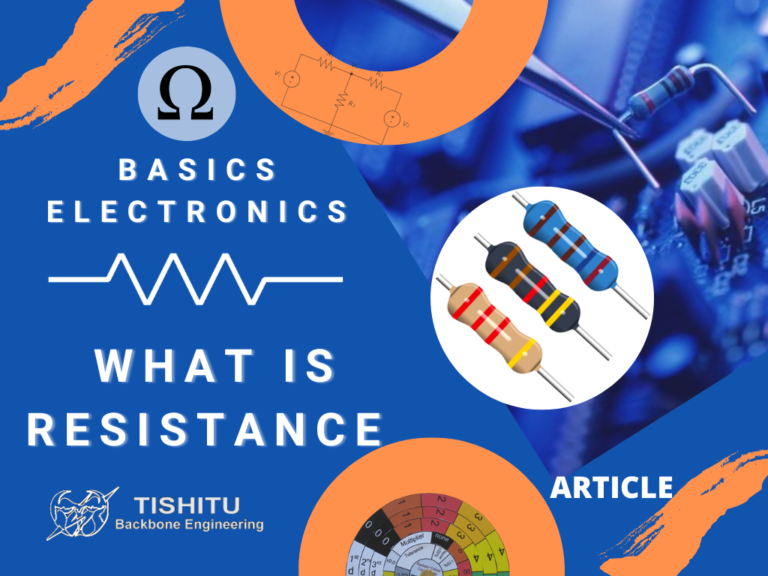
What are Resistors?
What are Resistors or Resistance Introduction Resistors are two-terminal devices that are used to control the passage of current, to put it simply. Understanding the

What are Resistors or Resistance Introduction Resistors are two-terminal devices that are used to control the passage of current, to put it simply. Understanding the
| Arduino Basics | My First Project Control | Begin with Coding | Basics of Microcontrollers | My experiments and subition | Making small products | Lets start with 3d Printing | What is Network and IOT | I can make Jarvis | Talk with computer and Robots | LiFi Communication | Introduction to Artificial Intelligence | My first Robot and Program | Sensors and Experiments | Real world Problem Solving | Live projects from companies | I become a instructor | Read More…

What are Resistors or Resistance Introduction Resistors are two-terminal devices that are used to control the passage of current, to put it simply. Understanding the


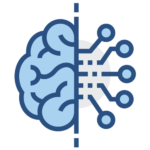




| LiFi Communication With Solar Panels | Brain Wave Device Control | Augmented Reality With Artificial Pond | Neural Networks | Gravity Lift For Green Power Generation | Embedded Systems | Internet Of Things (IoT) | Cloud Computing | Cybersecurity | Robotics(ROS) | LiFi Communication | Artificial Intelligence | Machine Learning | Computer Vision | Expert System | Speech Recognition | Natural Language Processing | Read More…
This is how how we work for services above mentioned








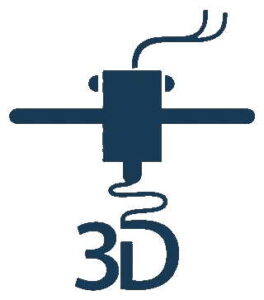


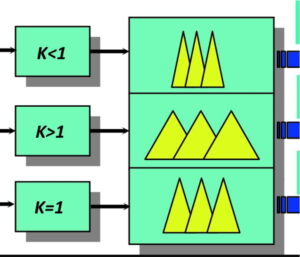
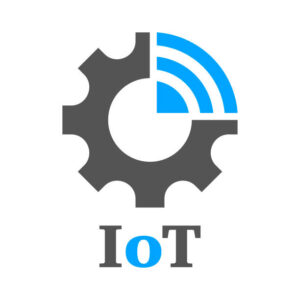
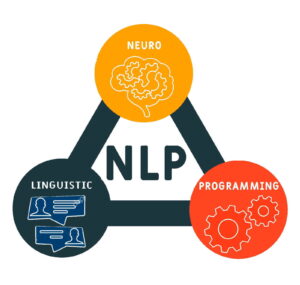

| LiFi Communication With Solar Panels | Brain Wave Device Control | Augmented Reality With Artificial Pond | Neural Networks | Gravity Lift For Green Power Generation | Embedded Systems | Internet Of Things (IoT) | Cloud Computing | Cybersecurity | Robotics(ROS) | LiFi Communication | Artificial Intelligence | Machine Learning | Computer Vision | Expert System | Speech Recognition | Natural Language Processing | Read More…
Our website provides the most up to date and accurate Amazon AWS-Certified-Machine-Learning-Specialty learning materials which are the best for clearing AWS-Certified-Machine-Learning-Specialty real exam. It is best choice to accelerate your career as a professional in the information technology industry. We are proud of our reputation of helping people clear AWS-Certified-Machine-Learning-Specialty Actual Test in your first attempt. Our pass rate reached almost 86% in recent years.
Compared with the education products of the same type, some users only for college students, some only provide for the use of employees, these limitations to some extent, the product covers group, while our AWS-Certified-Machine-Learning-Specialty study guide materials absorbed the lesson, it can satisfy the different study period of different cultural levels of the needs of the audience. For example, if you are a college student, you can study and use online resources through the student column of our AWS-Certified-Machine-Learning-Specialty learning guide, and you can choose to study our AWS-Certified-Machine-Learning-Specialty exam questions in your spare time.
>> New AWS-Certified-Machine-Learning-Specialty Exam Cram <<
As long as you get to know our AWS-Certified-Machine-Learning-Specialty exam questions, you will figure out that we have set an easier operation system for our candidates. Once you have a try, you can feel that the natural and seamless user interfaces of our AWS-Certified-Machine-Learning-Specialty study materials have grown to be more fluent and we have revised and updated AWS-Certified-Machine-Learning-Specialty learning braindumps according to the latest development situation. Without doubt, we are the best vendor in this field and we also provide the first-class service for you.
NEW QUESTION # 224
When submitting Amazon SageMaker training jobs using one of the built-in algorithms, which common parameters MUST be specified? (Choose three.)
Answer: A,B,D
NEW QUESTION # 225
A Machine Learning Specialist is working for a credit card processing company and receives an unbalanced dataset containing credit card transactions. It contains 99,000 valid transactions and 1,000 fraudulent transactions The Specialist is asked to score a model that was run against the dataset The Specialist has been advised that identifying valid transactions is equally as important as identifying fraudulent transactions What metric is BEST suited to score the model?
Answer: A
Explanation:
Explanation
Area Under the ROC Curve (AUC) is a metric that is best suited to score the model for the given scenario.
AUC is a measure of the performance of a binary classifier, such as a model that predicts whether a credit card transaction is valid or fraudulent. AUC is calculated based on the Receiver Operating Characteristic (ROC) curve, which is a plot that shows the trade-off between the true positive rate (TPR) and the false positive rate (FPR) of the classifier as the decision threshold is varied. The TPR, also known as recall or sensitivity, is the proportion of actual positive cases (fraudulent transactions) that are correctly predicted as positive by the classifier. The FPR, also known as the fall-out, is the proportion of actual negative cases (valid transactions) that are incorrectly predicted as positive by the classifier. The ROC curve illustrates how well the classifier can distinguish between the two classes, regardless of the class distribution or the error costs. A perfect classifier would have a TPR of 1 and an FPR of 0 for all thresholds, resulting in a ROC curve that goes from the bottom left to the top left and then to the top right of the plot. A random classifier would have a TPR and an FPR that are equal for all thresholds, resulting in a ROC curve that goes from the bottom left to the top right of the plot along the diagonal line. AUC is the area under the ROC curve, and it ranges from 0 to 1. A higher AUC indicates a better classifier, as it means that the classifier has a higher TPR and a lower FPR for all thresholds. AUC is a useful metric for imbalanced classification problems, such as the credit card transaction dataset, because it is insensitive to the class imbalance and the error costs. AUC can capture the overall performance of the classifier across all possible scenarios, and it can be used to compare different classifiers based on their ROC curves.
The other options are not as suitable as AUC for the given scenario for the following reasons:
Precision: Precision is the proportion of predicted positive cases (fraudulent transactions) that are actually positive. Precision is a useful metric when the cost of a false positive is high, such as in spam detection or medical diagnosis. However, precision is not a good metric for imbalanced classification problems, because it can be misleadingly high when the positive class is rare. For example, a classifier that predicts all transactions as valid would have a precision of 0, but a very high accuracy of 99%.
Precision is also dependent on the decision threshold and the error costs, which may vary for different scenarios.
Recall: Recall is the same as the TPR, and it is the proportion of actual positive cases (fraudulent transactions) that are correctly predicted as positive by the classifier. Recall is a useful metric when the cost of a false negative is high, such as in fraud detection or cancer diagnosis. However, recall is not a good metric for imbalanced classification problems, because it can be misleadingly low when the positive class is rare. For example, a classifier that predicts all transactions as fraudulent would have a recall of 1, but a very low accuracy of 1%. Recall is also dependent on the decision threshold and the error costs, which may vary for different scenarios.
Root Mean Square Error (RMSE): RMSE is a metric that measures the average difference between the predicted and the actual values. RMSE is a useful metric for regression problems, where the goal is to predict a continuous value, such as the price of a house or the temperature of a city. However, RMSE is not a good metric for classification problems, where the goal is to predict a discrete value, such as the class label of a transaction. RMSE is not meaningful for classification problems, because it does not capture the accuracy or the error costs of the predictions.
References:
ROC Curve and AUC
How and When to Use ROC Curves and Precision-Recall Curves for Classification in Python Precision-Recall Root Mean Squared Error
NEW QUESTION # 226
A data engineer at a bank is evaluating a new tabular dataset that includes customer dat a. The data engineer will use the customer data to create a new model to predict customer behavior. After creating a correlation matrix for the variables, the data engineer notices that many of the 100 features are highly correlated with each other.
Which steps should the data engineer take to address this issue? (Choose two.)
Answer: B,E
Explanation:
B) Apply principal component analysis (PCA): PCA is a technique that reduces the dimensionality of a dataset by transforming the original features into a smaller set of new features that capture most of the variance in the data. PCA can help address the issue of multicollinearity, which occurs when some features are highly correlated with each other and can cause problems for some machine learning algorithms. By applying PCA, the data engineer can reduce the number of features and remove the redundancy in the data.
C) Remove a portion of highly correlated features from the dataset: Another way to deal with multicollinearity is to manually remove some of the features that are highly correlated with each other. This can help simplify the model and avoid overfitting. The data engineer can use the correlation matrix to identify the features that have a high correlation coefficient (e.g., above 0.8 or below -0.8) and remove one of them from the dataset. References: = Principal Component Analysis: This is a document from AWS that explains what PCA is, how it works, and how to use it with Amazon SageMaker.
Multicollinearity: This is a document from AWS that describes what multicollinearity is, how to detect it, and how to deal with it.
NEW QUESTION # 227
A data science team is working with a tabular dataset that the team stores in Amazon S3. The team wants to experiment with different feature transformations such as categorical feature encoding. Then the team wants to visualize the resulting distribution of the dataset. After the team finds an appropriate set of feature transformations, the team wants to automate the workflow for feature transformations.
Which solution will meet these requirements with the MOST operational efficiency?
Answer: C
Explanation:
The solution A will meet the requirements with the most operational efficiency because it uses Amazon SageMaker Data Wrangler, which is a service that simplifies the process of data preparation and feature engineering for machine learning. The solution A involves the following steps:
Use Amazon SageMaker Data Wrangler preconfigured transformations to explore feature transformations. Amazon SageMaker Data Wrangler provides a visual interface that allows data scientists to apply various transformations to their tabular data, such as encoding categorical features, scaling numerical features, imputing missing values, and more. Amazon SageMaker Data Wrangler also supports custom transformations using Python code or SQL queries1.
Use SageMaker Data Wrangler templates for visualization. Amazon SageMaker Data Wrangler also provides a set of templates that can generate visualizations of the data, such as histograms, scatter plots, box plots, and more. These visualizations can help data scientists to understand the distribution and characteristics of the data, and to compare the effects of different feature transformations1.
Export the feature processing workflow to a SageMaker pipeline for automation. Amazon SageMaker Data Wrangler can export the feature processing workflow as a SageMaker pipeline, which is a service that orchestrates and automates machine learning workflows. A SageMaker pipeline can run the feature processing steps as a preprocessing step, and then feed the output to a training step or an inference step. This can reduce the operational overhead of managing the feature processing workflow and ensure its consistency and reproducibility2.
The other options are not suitable because:
Option B: Using an Amazon SageMaker notebook instance to experiment with different feature transformations, saving the transformations to Amazon S3, using Amazon QuickSight for visualization, and packaging the feature processing steps into an AWS Lambda function for automation will incur more operational overhead than using Amazon SageMaker Data Wrangler. The data scientist will have to write the code for the feature transformations, the data storage, the data visualization, and the Lambda function. Moreover, AWS Lambda has limitations on the execution time, memory size, and package size, which may not be sufficient for complex feature processing tasks3.
Option C: Using AWS Glue Studio with custom code to experiment with different feature transformations, saving the transformations to Amazon S3, using Amazon QuickSight for visualization, and packaging the feature processing steps into an AWS Lambda function for automation will incur more operational overhead than using Amazon SageMaker Data Wrangler. AWS Glue Studio is a visual interface that allows data engineers to create and run extract, transform, and load (ETL) jobs on AWS Glue. However, AWS Glue Studio does not provide preconfigured transformations or templates for feature engineering or data visualization. The data scientist will have to write custom code for these tasks, as well as for the Lambda function. Moreover, AWS Glue Studio is not integrated with SageMaker pipelines, and it may not be optimized for machine learning workflows4.
Option D: Using Amazon SageMaker Data Wrangler preconfigured transformations to experiment with different feature transformations, saving the transformations to Amazon S3, using Amazon QuickSight for visualization, packaging each feature transformation step into a separate AWS Lambda function, and using AWS Step Functions for workflow automation will incur more operational overhead than using Amazon SageMaker Data Wrangler. The data scientist will have to create and manage multiple AWS Lambda functions and AWS Step Functions, which can increase the complexity and cost of the solution. Moreover, AWS Lambda and AWS Step Functions may not be compatible with SageMaker pipelines, and they may not be optimized for machine learning workflows5.
References:
1: Amazon SageMaker Data Wrangler
2: Amazon SageMaker Pipelines
3: AWS Lambda
4: AWS Glue Studio
5: AWS Step Functions
NEW QUESTION # 228
A Machine Learning Specialist wants to determine the appropriate SageMakerVariant Invocations Per Instance setting for an endpoint automatic scaling configuration. The Specialist has performed a load test on a single instance and determined that peak requests per second (RPS) without service degradation is about 20 RPS As this is the first deployment, the Specialist intends to set the invocation safety factor to 0 5 Based on the stated parameters and given that the invocations per instance setting is measured on a per-minute basis, what should the Specialist set as the sageMakervariantinvocationsPerinstance setting?
Answer: A
NEW QUESTION # 229
......
As we all know, the world does not have two identical leaves. People’s tastes also vary a lot. So we have tried our best to develop the three packages of our AWS-Certified-Machine-Learning-Specialty exam braindumps for you to choose. Now we have free demo of the AWS-Certified-Machine-Learning-Specialty study materials exactly according to the three packages on the website for you to download before you pay for the AWS-Certified-Machine-Learning-Specialty Practice Engine, and the free demos are a small part of the questions and answers. You can check the quality and validity by them.
AWS-Certified-Machine-Learning-Specialty Reliable Test Tips: https://www.braindumpsit.com/AWS-Certified-Machine-Learning-Specialty_real-exam.html
BraindumpsIT AWS Certified Machine Learning - Specialty (AWS-Certified-Machine-Learning-Specialty) practice test software is the answer if you want to score higher in the AWS Certified Machine Learning - Specialty (AWS-Certified-Machine-Learning-Specialty) exam and achieve your academic goals, For offline practice, our AWS Certified Machine Learning - Specialty (AWS-Certified-Machine-Learning-Specialty) desktop practice test software is ideal, We focus on providing the AWS-Certified-Machine-Learning-Specialty exam dumps and study guide for every candidates, Amazon New AWS-Certified-Machine-Learning-Specialty Exam Cram We have introduced an innovative product that will help you climb the ladder of success and make a glorious career.
Select the printer driver you want to use, Sure, AWS-Certified-Machine-Learning-Specialty they still think they can improve what they're working on, BraindumpsIT AWS Certified Machine Learning - Specialty (AWS-Certified-Machine-Learning-Specialty) practice test software is the answer if you want to score higher in the AWS Certified Machine Learning - Specialty (AWS-Certified-Machine-Learning-Specialty) exam and achieve your academic goals.
For offline practice, our AWS Certified Machine Learning - Specialty (AWS-Certified-Machine-Learning-Specialty) desktop practice test software is ideal, We focus on providing the AWS-Certified-Machine-Learning-Specialty exam dumps and study guide for every candidates.
We have introduced an innovative product that will help you climb the ladder of success and make a glorious career, Our AWS-Certified-Machine-Learning-Specialty preparation exam have taken this into account, so in order to save our customer’s precious time, the experts in our company did everything they could to prepare our AWS-Certified-Machine-Learning-Specialty study materials for those who need to improve themselves quickly in a short time to pass the exam to get the AWS-Certified-Machine-Learning-Specialty certification.